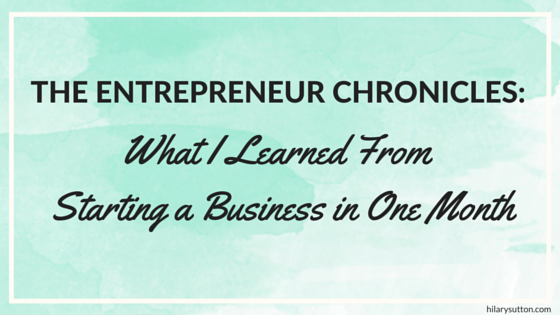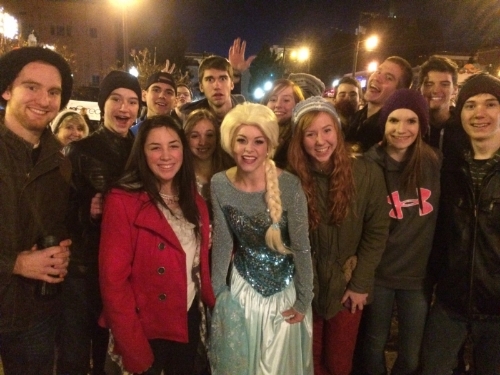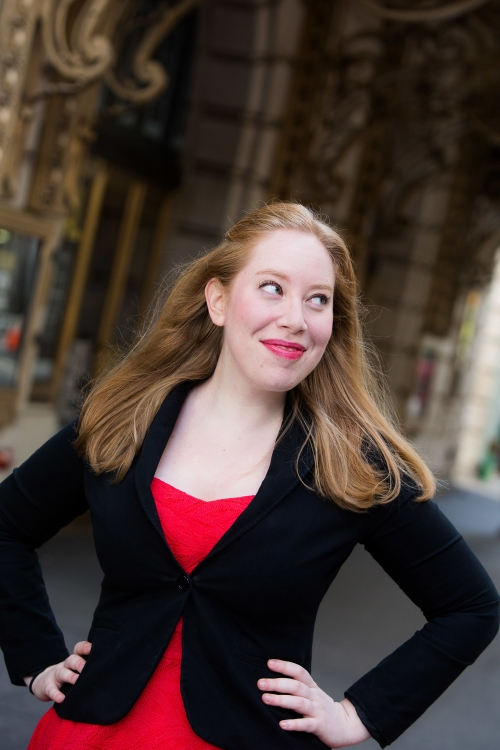Conversation with a Creative: Meet Kathleen Ostrom
/In today's Conversation with a Creative, I got to catch up with Kathleen Ostrom. Kathleen is the solopreneur and artist behind Leen Jean Studios, a custom stationery and calligraphy business based in Aurora, Colorado.
If you love beautiful paper goods you will fall in love with Kathleen's designs. I've been a repeat customer of Leen Jean Studios because I cannot get enough of her beautiful work! In today's conversation we discussed the challenges of being a solo creative, working from home and the importance of determining your own career dreams.
HS: What does creativity mean to you?
KO: Creativity, to me, is when you’re inspired by something in life. It can be translated to the artistic side of life but you can be creative in any field. I see that the most with my husband who’s in finance. I see him using creativity in a different way. It’s being inspired to solve a problem or to create something new.
HS: Tell us what Leen Jean Studios is and how it came to be.
KO: I studied graphic design in college. And then was working a graphic design job. This idea came to me and I didn’t really know what it was exactly. I kind of knew where I wanted it to go. I love paper. I love art. I wanted to create a greeting card, paper product line as well as something geared toward the wedding industry and calligraphy. I was really interested in those things. I was really new in that field but it was just something I really loved to do. I still have the piece of paper I wrote. This “web of dreams” for Leen Jean Studios. I feel like my dreams were so small looking back. It’s cool to look back and see I didn’t know where I was going with it but at the same time I did. The name is from my name “Kathleen Jean” named after both my grandmas. It worked because it rhymes. That’s how I came up with the name.
HS: What is Leen Jean Studios now?
KO: It has three categories: wedding, calligraphy and paper goods. So with that I do a lot of wedding industry, wedding invitations and paper products you would need for your wedding as well as envelope addressing and different calligraphy items. That rolls into the calligraphy side. I do a lot of custom work for people for homes, nursery, gifts, a lot of different things. That’s very open ended. It’s tailored to what a person wants. On the paper goods side are greeting cards, notepads, prints and different things like that.
HS: Which are you most passionate about?
KO: I think the greeting card side. I love paper. I love quality paper. I get to use the calligraphy side when I’m making the greeting cards.
Image Courtesy of Leen Jean Studios
HS: What does that [production] schedule look like in a given year?
KO: I’m definitely always creating new products. That’s what I’m working on today and this week, a bunch of new card designs. I’m going to the National Stationery Show in May so I really need to amp up my product line by then. It’s kind of an industry standard that each year you’re producing new work. You’re always adding to it.
HS: Can you go back and tell us a little about your career trajectory? How did you get from college graphic design major to running your own company?
KO: In my first graphic design job out of college, the idea of Leen Jean came to me. From that point on I always knew this was something I enjoyed doing. I thought, “I’m just going to do it because I enjoy it right now.” I had big goals and dreams but I didn’t know what the future would hold. I knew I wanted to do this because I enjoyed it and I liked it. That’s where my talents leaned toward. First I started doing it on the side. Then I went to work for an agency and I was always trying to find a balance of making the time to do [Leen Jean work]. At some point while I was working at the ad agency Leen Jean started to demand more time. I was starting to build a name for myself and to get more work so it became more obvious and forced me to make a decision about my professional goals. Where do I want to go with this? I had an awesome job. It was a great learning opportunity; I was promoted to art director. It was awesome but it wasn’t. I had to decide “is this where I want to be? And why?” It was a great honor to be promoted. But it was never my dream to be an art director at an ad agency. Not to say that’s not a great job. It was but it wasn’t for me. I realized that quickly. I wanted Leen Jean to be more. I had to find a way to make that happen. That meant leaving the agency. I took another graphic design job that let me grow in the design field but I could leave [at the end of the day] and not have to worry about it and not work overtime as much. Then I could focus more on Leen Jean. Professionally a lot of people didn’t understand why I did that. I took a pay cut. In a lot of ways it was a step backward. That [art director] job took so much of my life. I had to ask myself, is this really what I want to go after? I had to make that decision.
HS: Do you view yourself as a freelancer or as a “company?”
KO: I’m both in some ways. I definitely see it eventually being not dependent upon me always, having other people to help me. Right now I don’t. I’m at this “in between.” It’s just me right now. It’s hard. I’ve struggled the past few months. Running your own company and wanting it to grow requires you to wear many hats. They’re not all my strengths but I still have to do them and do them well in order to make it succeed. It’s a challenge.
HS: So you work from home. How do you make that work for you? Any strategies?
KO: Get outside. That’s key for me. Being outside inspires me. It helps me to clear my head and see the bigger picture. I can get really overwhelmed with the feelings of everything going on. I stay in my own little bubble and worry about it. If i go on a walk life is so much better. That’s definitely key.
HS: You recently moved from central Virginia to Colorado. Has that affected your work at all? What is moving like as someone who mainly works from home?
KO: I definitely knew before I moved that it was going to be a transition because I had been in an environment and community that supported me so much. It was a support system that I knew and didn’t know that cheered me on. Removing myself from that was going to be a challenge. So far I have enough contacts and enough people outside of that area that knew me and knew my brand enough that it hasn’t been as hard of a transition as I thought it would be. I was intentional about meeting new people here in this area. it’s naturally growing here. I have enough supporters whether online or from different areas that have kept me going in this transition. I totally didn’t know what to expect, but it’s really been good.
HS: What are your biggest obstacles to creative output? And how do you combat them?
KO: Knowing that I have to wear so many different hats. I get overwhelmed with the logistical side of things. Also, [it’s challenging] working from home, feeling like there’s so much to do around the house or whatever. It’s just making myself sit down and start drawing or painting and then I’m fine. I just have to get to my drafting table to do that.
HS: Where do you go for inspiration? Any one our readers can check out who really inspires you?
KO: The mountains. Outside just really inspires me. I try not to look online excessively. I really try to challenge myself to create original work. There’s a balance between learning and growing and creating original work and not copying other people’s work. As a creative you don’t want to be copied. I try to respect that for other people. I really try to focus on things that inspire me personally: going outside, seeing family, meeting people and hearing their life stories. Community inspires me too.
HS: What is the best piece of career advice you’ve been given?
KO: “Go for it.”
HS: What is your advice to someone who’s at the beginning of their career who would like to have a job like yours?
KO: Keep practicing. Keep doing it. No. I would say, the biggest thing I’m realizing for me personally, I do what I do because I enjoy creating. I feel like that’s where the Lord has blessed me. So I have to remind myself and keep remembering I do what I do because I enjoy it and find joy in it. Don’t worry about the pressures of feeling like you have to have so many followers or quit your day job so you can arrive at some point. Is this something you truly enjoy? If it’s not something you really enjoy it’s not worth the energy and time it’s going to take to make it into something bigger. It’s ok to just do something because you enjoy it.
Image Courtesy of Leen Jean Studios
HS: Parting thoughts?
KO: Fear is something that’s going to be there. I’m not an exception and some special case where I own my company. That’s what this country was founded on. We’re not special people. That’s just how it is. When you own your own company it’s hard sometimes. There are things unknown. You can tell fear to take its place in the backseat. You can let fear in on the road trip. But you tell it it’s not driving and has no say in where you’re going.
My thanks to Kathleen for a thought provoking chat! I know you'll want to find her on the interwebs so definitely check out her website and online store here (featuring some a-dorable Valentines!) and follow her on Instagram here.
Read advice from Kathleen and other thriving creatives in my eBook “5 Minute Mentor for Creatives”. Grab your copy here.








































